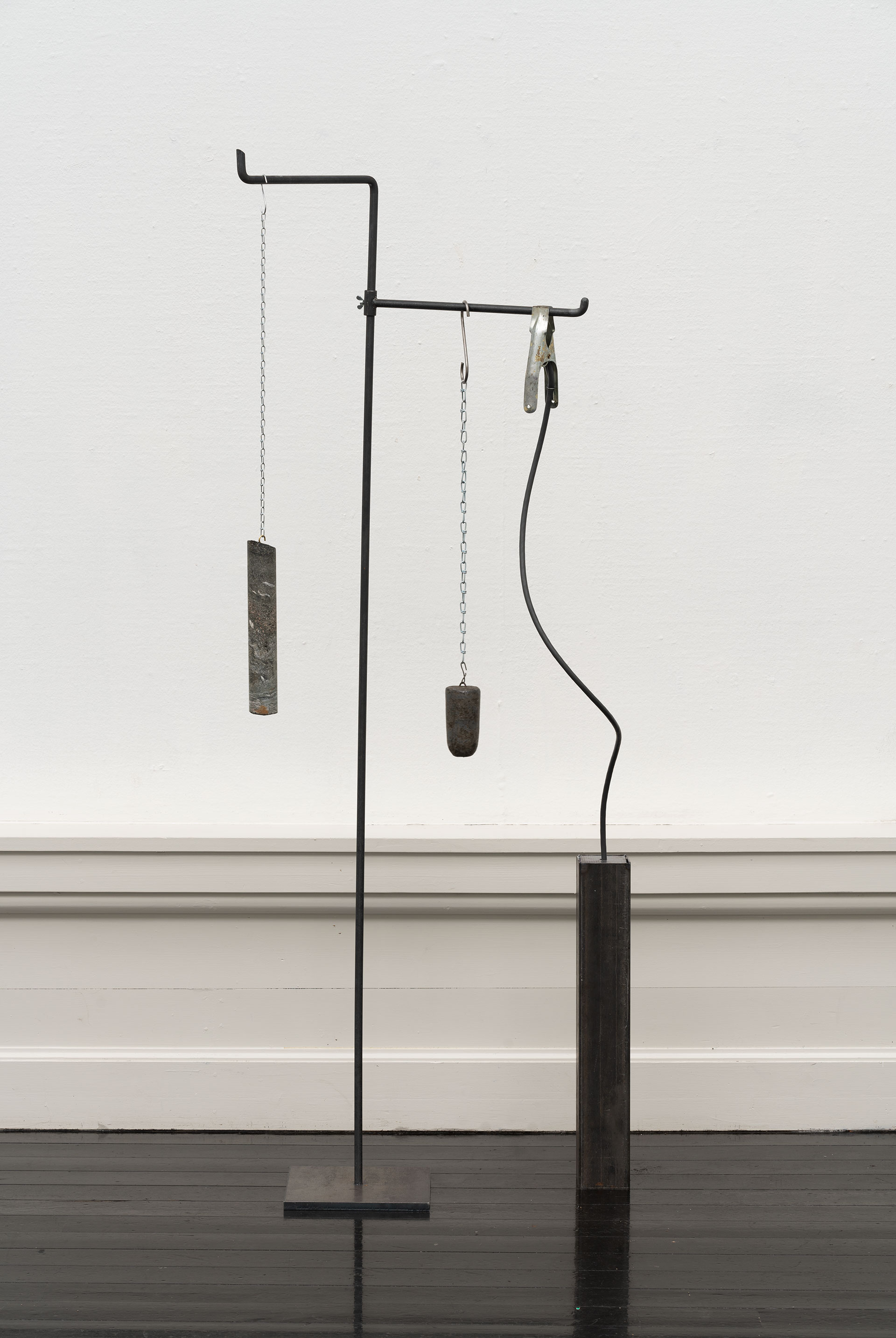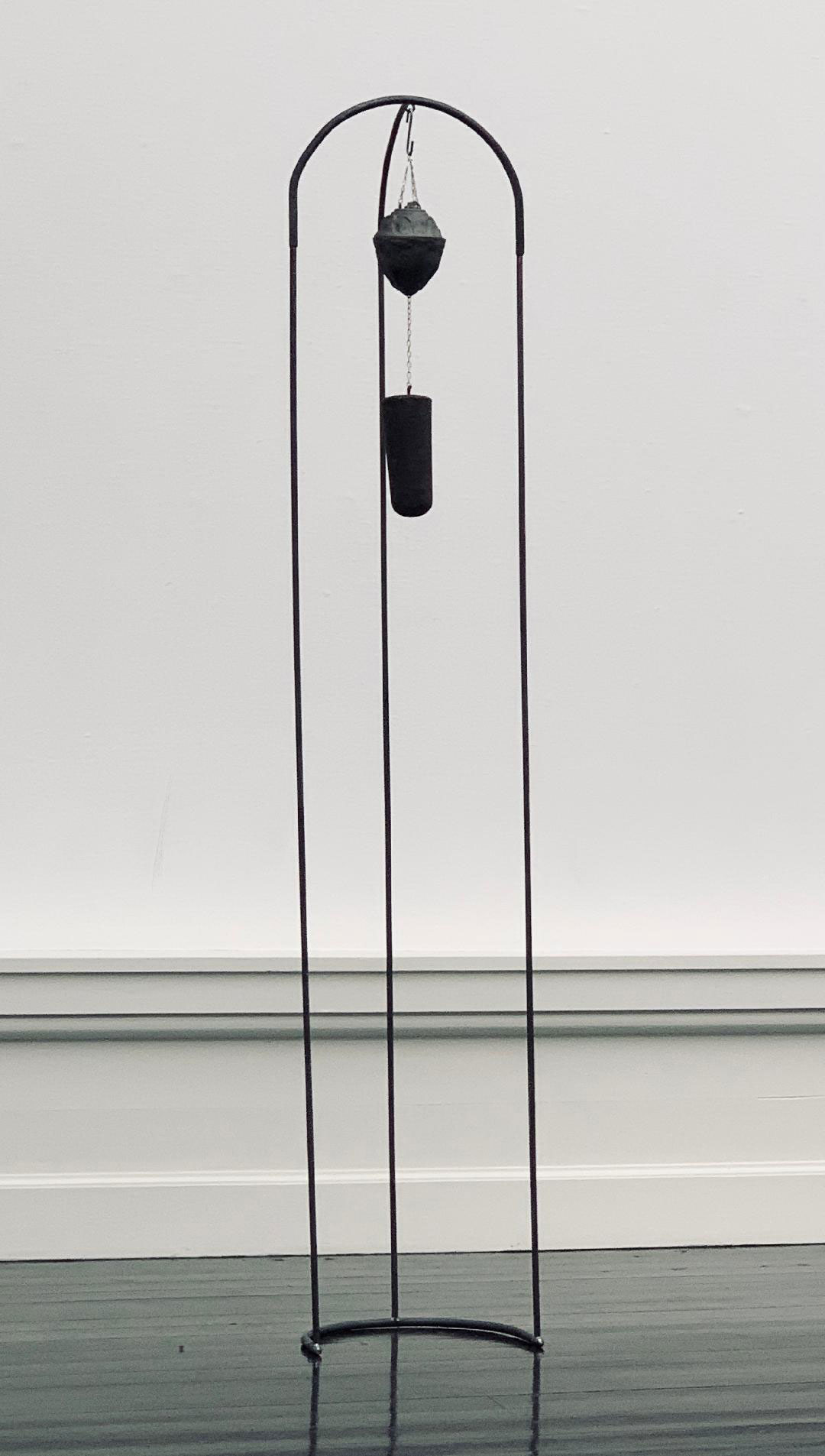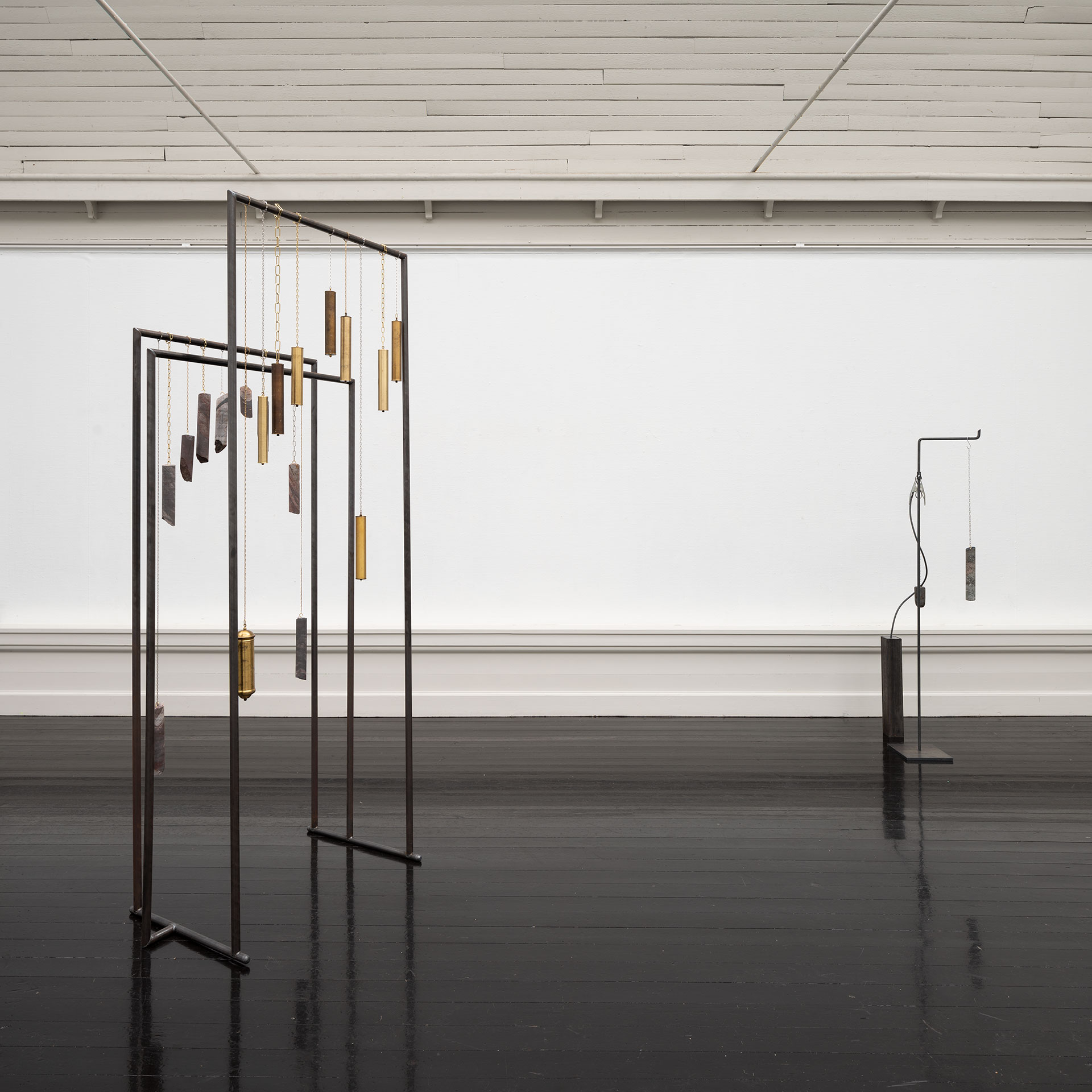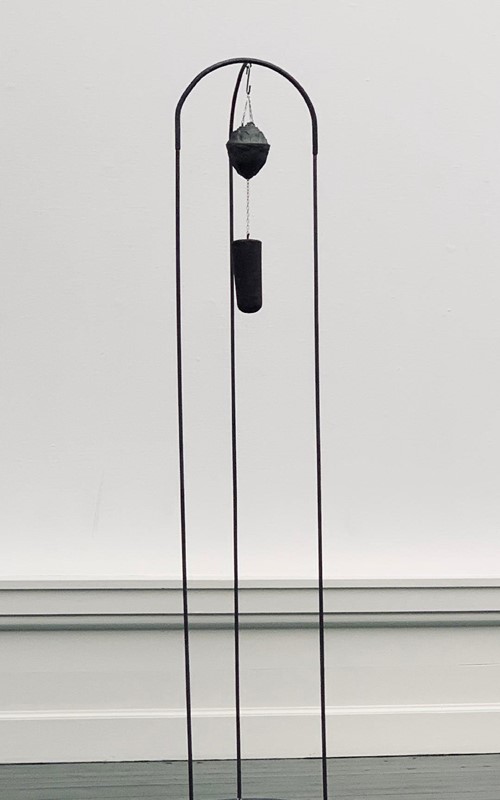Listening Back In Time
Hanging from metal chains are the grandfather-clock pendulum, a tangible notion of Experienced Time, and a cylindrical iron core-drilling that can be traced back to some of early life on earth. The core-drillings sedimentation is a direct representation of deep geological time. Connected through an electrical charger are the sound recordings from the Orion Nebulae through ALMA (Atacama Large Millimeter/submillimeter Array) radiotelescopes. ALMA identifies molecules from the analysis of the radio waves it captures. Each specific emission corresponds to a molecule. Radio waves are reinterpreted as sound waves. Each emission captured from Orion was assigned a combination of sound waves. ALMA Sounds seek to decode and interpret the frequencies of the Universe and transform them into sound just as the purple light hints to the invisible light emitted by the dust and gas in the nebula present in Orion.
______________________________________________________________________
Traces of Memory, Spatial Memory, Points in Time and Untitled explores different under- standings of the concept of time, of which Kalsmose is particularly interested in the so-called deep time. The understanding of deep time was first described by the Scottish geologist James Hutton in the 18th century and refers to a geological understanding of time, which is defined on the basis of geological shifts and markings. For example, we are currently in an era defined by the stars and the energy they create. Deep time extends over an infinite number of years, both in the past and in the future, and therefore appears intangible and abstract compared to the time horizon we operate with in our everyday life.
Photos by David Stjernholm
For inquiry contact Martin Asbæk Gallery: liselotte@martinasbaek.com











